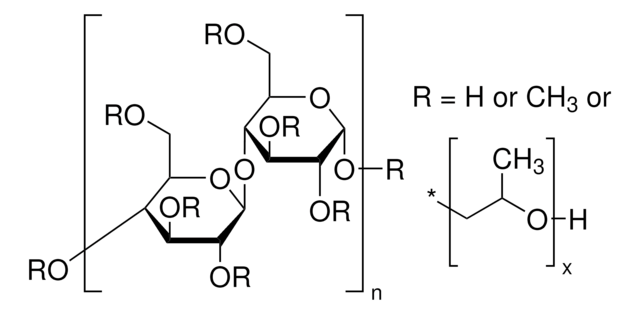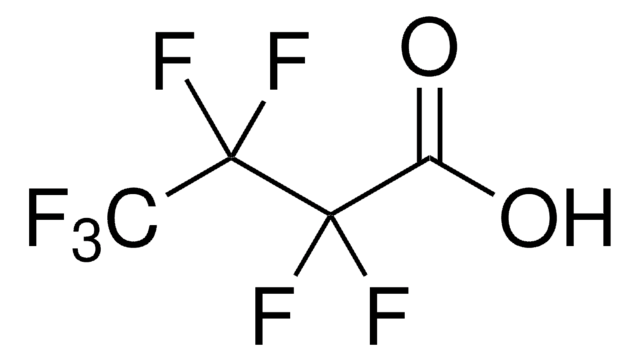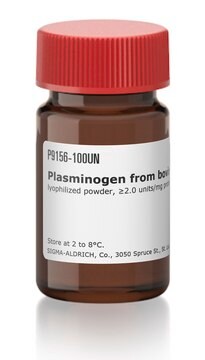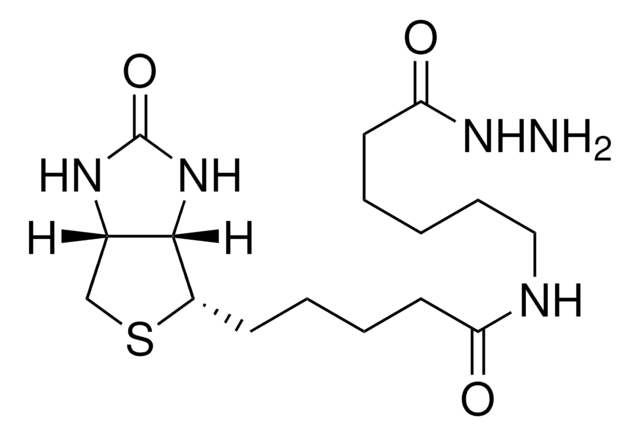A7824
6-Aminocaproic acid
BioUltra, ≥99%
Sinónimos:
ε-Aminocaproic acid, 6-Aminohexanoic acid, EACA
About This Item
Productos recomendados
biological source
synthetic (organic)
Quality Level
product line
BioUltra
assay
≥99%
form
powder
technique(s)
cell culture | mammalian: suitable
impurities
≤0.005% Phosphorus (P)
≤0.1% Insoluble matter
ign. residue
≤0.1%
mp
207-209 °C (dec.) (lit.)
solubility
H2O: 0.5 M, clear, colorless
anion traces
chloride (Cl-): ≤0.05%
sulfate (SO42-): ≤0.05%
cation traces
Al: ≤0.0005%
Ca: ≤0.005%
Cu: ≤0.0005%
Fe: ≤0.0005%
K: ≤0.005%
Mg: ≤0.001%
NH4+: ≤0.05%
Na: ≤0.02%
Pb: ≤0.001%
Zn: ≤0.0005%
storage temp.
room temp
SMILES string
NCCCCCC(O)=O
InChI
1S/C6H13NO2/c7-5-3-1-2-4-6(8)9/h1-5,7H2,(H,8,9)
InChI key
SLXKOJJOQWFEFD-UHFFFAOYSA-N
Gene Information
human ... PLAT(5327) , PLG(5340)
rat ... Ppm1a(24666)
¿Está buscando productos similares? Visita Guía de comparación de productos
Biochem/physiol Actions
Storage Class
11 - Combustible Solids
wgk_germany
WGK 2
flash_point_f
404.6 - 408.2 °F
flash_point_c
207 - 209 °C
ppe
dust mask type N95 (US), Eyeshields, Gloves
Certificados de análisis (COA)
Busque Certificados de análisis (COA) introduciendo el número de lote del producto. Los números de lote se encuentran en la etiqueta del producto después de las palabras «Lot» o «Batch»
¿Ya tiene este producto?
Encuentre la documentación para los productos que ha comprado recientemente en la Biblioteca de documentos.
Los clientes también vieron
Nuestro equipo de científicos tiene experiencia en todas las áreas de investigación: Ciencias de la vida, Ciencia de los materiales, Síntesis química, Cromatografía, Analítica y muchas otras.
Póngase en contacto con el Servicio técnico










